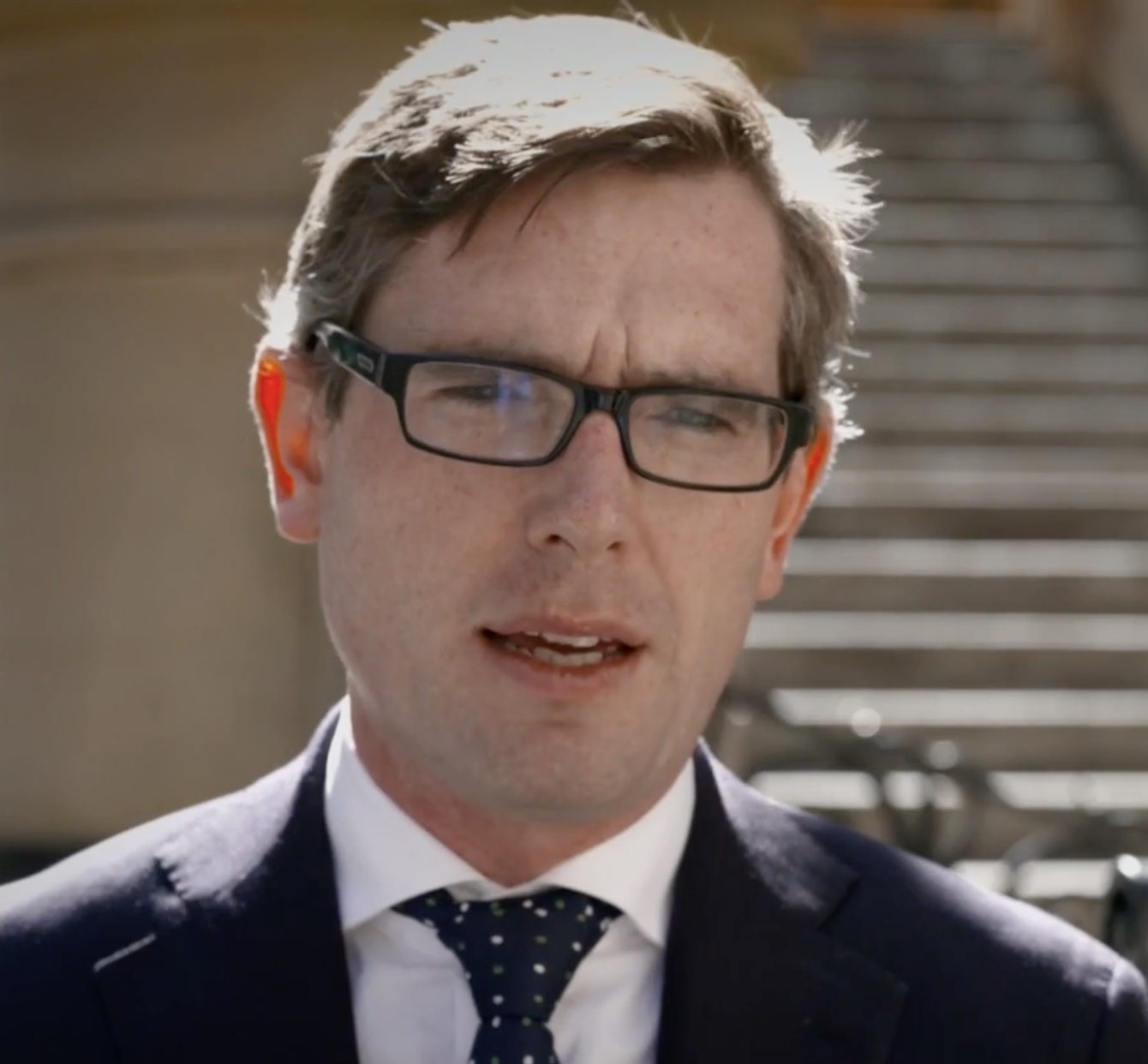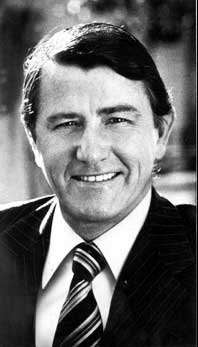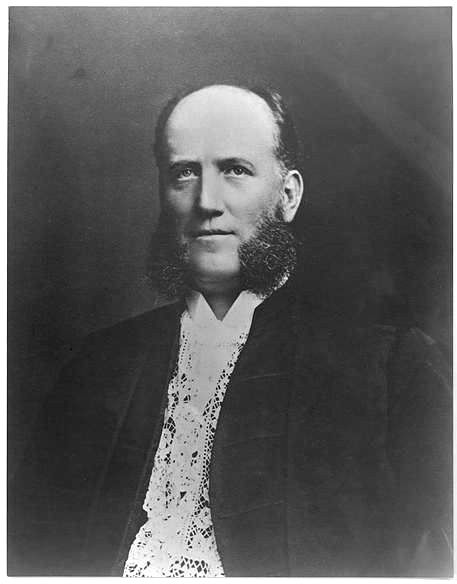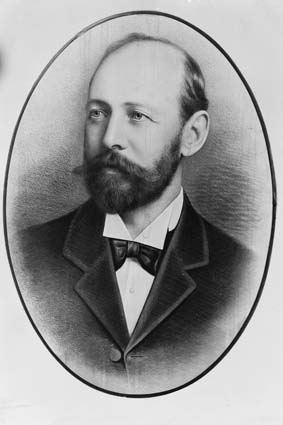|
Wran Ministry (1980–1981)
The Wran ministry (1980–1981) or Third Wran ministry was the 73rd ministry of the New South Wales Government, and was led by the 35th Premier of New South Wales, Neville Wran, representing the Labor Party. It was the third of eight consecutive occasions when Wran was Premier. Background Wran had been elected to the Legislative Council of New South Wales by a joint sitting of the New South Wales Parliament on 12 March 1970. He was Leader of the Opposition in the Legislative Council from 22 February 1972. He resigned from the council on 19 October 1973 to switch to the Legislative Assembly, successfully contesting the election for Bass Hill, which he would hold until his retirement in 1986. Wran successfully challenged Pat Hills to become Leader of Labor Party and Leader of the Opposition from 3 December 1973 and became Premier following a narrow one seat victory at the 1976 election. Labor retained government at the 1978 election in a landslide victory, popularly known as ... [...More Info...] [...Related Items...] OR: [Wikipedia] [Google] [Baidu] |
Government Of New South Wales
The Government of New South Wales, also known as the NSW Government, is the Australian state democratic administrative authority of New South Wales. It is currently held by a coalition of the Liberal Party and the National Party. The Government of New South Wales, a parliamentary constitutional monarchy, was formed in 1856 as prescribed in its Constitution, as amended from time to time. Since the Federation of Australia in 1901, New South Wales has been a state of the Commonwealth of Australia, and the Constitution of Australia regulates its relationship with the Commonwealth. Under the Australian Constitution, New South Wales, as with all states, ceded legislative and judicial supremacy to the Commonwealth, but retained powers in all matters not in conflict with the Commonwealth. Executive and judicial powers New South Wales is governed according to the principles of the Westminster system, a form of parliamentary government based on the model of the United Kingdom. Legisl ... [...More Info...] [...Related Items...] OR: [Wikipedia] [Google] [Baidu] |
New South Wales Parliament
The Parliament of New South Wales is a bicameral legislature in the Australian state of New South Wales (NSW), consisting of the New South Wales Legislative Assembly (lower house) and the New South Wales Legislative Council (upper house). Each house is directly elected by the people of New South Wales at elections held approximately every four years. The Parliament derives its authority from the King of Australia, King Charles III, represented by the Governor of New South Wales, who chairs the Executive Council. The parliament shares law making powers with the Australian Federal (or Commonwealth) Parliament. The New South Wales Parliament follows Westminster parliamentary traditions of dress, Green–Red chamber colours and protocols. It is located in Parliament House on Macquarie Street, Sydney. History The Parliament of New South Wales was the first of the Australian colonial legislatures, with its formation in the 1850s. At the time, New South Wales was a British colony ... [...More Info...] [...Related Items...] OR: [Wikipedia] [Google] [Baidu] |
Wran Ministry (1981–1983)
The Wran ministry (1981–1983) or Fourth Wran ministry was the 74th ministry of the New South Wales Government, and was led by the 35th Premier of New South Wales, Neville Wran, representing the Labor Party. It was the fourth of eight consecutive occasions when Wran was Premier. Background Wran had been elected to the Legislative Council of New South Wales by a joint sitting of the New South Wales Parliament on 12 March 1970. He was Leader of the Opposition in the Legislative Council from 22 February 1972. He resigned from the council on 19 October 1973 to switch to the Legislative Assembly, successfully contesting the election for Bass Hill, which he would hold until his retirement in 1986. Wran successfully challenged Pat Hills to become Leader of Labor Party and Leader of the Opposition from 3 December 1973 and became Premier following a narrow one seat victory at the 1976 election. Labor retained government at the 1981 election, gaining an additional 6 seats despite a ... [...More Info...] [...Related Items...] OR: [Wikipedia] [Google] [Baidu] |
1981 New South Wales State Election
Elections were held in the state of New South Wales, Australia, on Saturday 19 September 1981. The result was a second "Wranslide": a landslide victory for the Labor Party under Neville Wran. Labor increased its already sizeable majority, winning what is still its biggest-ever share of seats in the New South Wales Legislative Assembly–69 out of 99 seats, 69.7 percent of the chamber. The Liberals suffered the double indignity of losing the seat contested by their leader Bruce McDonald to an independent, and of being reduced to the same number of seats in parliament as their ostensible junior coalition partner, the National Country Party. In fact it was the second election in a row in which the sitting Liberal leader had failed to win a seat; Peter Coleman had been rolled in his own seat in 1978. Both the Liberals and National Country Party finished with 14 seats. The election marked another milestone for electoral reform in New South Wales. The allocation of preferences be ... [...More Info...] [...Related Items...] OR: [Wikipedia] [Google] [Baidu] |
Jack Renshaw
John Brophy Renshaw AC (8 August 190928 July 1987) was an Australian politician. He was Labor Premier of New South Wales from 30 April 1964 to 13 May 1965. He was the first New South Wales Premier born in the 20th century. Early life Jack Renshaw was born on 8 August 1909 near Wellington in central New South Wales. His parents were John Ignatius Renshaw and Ann Renshaw (''née'' Reidy). When he was six his parents took up a selection near the town of Binnaway. Five years later his father died in a farm accident, leaving his widow to raise eight children. Following Ann Renshaw's remarriage the family prospered and came to own a fuel depot, stock and station agency and butchery in the town. Renshaw was educated at Binnaway Central School, Patrician Brothers at Orange (where he lived with his grandmother), and then Holy Cross College at Ryde in north-western Sydney. After leaving school at the age of 14 he helped to run the family dairy property at Hampden Park, and also helped ... [...More Info...] [...Related Items...] OR: [Wikipedia] [Google] [Baidu] |
Landslide Victory
A landslide victory is an election result in which the victorious candidate or party wins by an overwhelming margin. The term became popular in the 1800s to describe a victory in which the opposition is "buried", similar to the way in which a geological landslide buries whatever is in its path. What constitutes a landslide varies by the type of electoral system. Even within an electoral system, there is no consensus on what sized margin makes for a landslide. Notable examples Argentina * 2011 Argentine general election – Cristina Fernández de Kirchner of the Front for Victory won a second term as President of Argentina in a landslide victory. She received 54.11% of votes, while no other candidate received more than 16.81%. Australia State and territory elections: * 1989 Queensland state election – Wayne Goss led the Labor Party to a historic landslide victory over the Country Party (later known as the National Party) led by Russell Cooper. The Country Party had been in ... [...More Info...] [...Related Items...] OR: [Wikipedia] [Google] [Baidu] |
1978 New South Wales State Election
A general election was held in the state of New South Wales, Australia, on Saturday 7 October 1978. The result was a landslide victory for the Labor Party under Neville Wran, popularly known as the "Wranslide." It is notable for being so successful for the Labor Party that it tallied 57 percent of the primary vote, the largest primary vote for any party in over a century. Having gone into the election with a razor-thin majority of one seat, Labor scored a 13-seat swing, giving it a strong majority of 63 seats. Labor even managed to defeat the Leader of the Opposition, Peter Coleman, in his own electorate. The seats of many other prominent Shadow Ministers fell to Labor as well. Labor also won took many seats in areas long reckoned as Coalition heartland. Among them were four seats that Labor had never won before this election-- Willoughby (contested for the Liberal Party by Nick Greiner who later became Premier), Manly, Wakehurst and Cronulla. It also came within strikin ... [...More Info...] [...Related Items...] OR: [Wikipedia] [Google] [Baidu] |
1976 New South Wales State Election
A general election for the New South Wales Legislative Assembly was held in the state of New South Wales, Australia, on Saturday 1 May 1976. The result was a narrow win for the Labor Party under Neville Wran—the party's first in the state in more than a decade. Issues The incumbent Liberal- Country Party coalition had lost its longtime leader, Sir Robert Askin, at the end of 1974. His successor, Tom Lewis, didn't last a year as premier before his colleagues dumped him in favour of Eric Willis. Wran successfully emerged from the shadow of the defeated Whitlam Labor government at a federal level. Labor's campaign focussed largely on the leader himself, what Australians call a "Presidential" style campaign. The state party had undergone a long process of renewal, and emerged with strong moderate credentials. Labor also offered an alternative to a long-serving government widely perceived as corrupt. Wran's campaign slogan, "Let's put the state in better shape," delivered ... [...More Info...] [...Related Items...] OR: [Wikipedia] [Google] [Baidu] |
Leader Of The Opposition (New South Wales)
The Leader of the Opposition is a title held by the leader of the second-largest party in the New South Wales Legislative Assembly, the lower house of the Parliament of New South Wales. There is also a Leader of the Opposition in the Legislative Council. The leader acts as the public face of the opposition, leading the opposition on the floor of parliament. They act as a chief critic of the government and ultimately attempt to portray the opposition as a feasible alternate government. They are also given certain additional rights under parliamentary standing orders, such as extended time limits for speeches. The current leader of the opposition is Chris Minns, who was 2021 Australian Labor Party (New South Wales Branch) leadership election, elected on 4 June 2021. Penny Sharpe serves as leader of the opposition in the Legislative Council. List of leaders of the opposition in New South Wales since 1901 ; Political parties Leaders of the opposition in the Legislative ... [...More Info...] [...Related Items...] OR: [Wikipedia] [Google] [Baidu] |
Leader Of The Australian Labor Party In New South Wales
The Australian Labor Party (New South Wales Branch), also known as NSW Labor, is the New South Wales branch of the Australian Labor Party. The parliamentary leader is elected from and by the members of the party caucus, comprising all party members in the Legislative Assembly and Legislative Council. The party factions have a strong influence on the election of the leader. The leader's position is dependent on the continuing support of the caucus (and party factions) and the leader may be deposed by failing to win a vote of confidence of parliamentary members. By convention, the premier sits in the Legislative Assembly, and is the leader of the party controlling a majority in that house. The party leader also typically is a member of the Assembly, though this is not a strict party constitutional requirement. Barrie Unsworth, for example, was elected party leader while a member of the Legislative Council. He then transferred to the Assembly by winning a seat at a by-election. W ... [...More Info...] [...Related Items...] OR: [Wikipedia] [Google] [Baidu] |
Pat Hills
Patrick Darcy Hills (31 December 1917 – 22 April 1992) was a New South Wales politician. He served in various high offices across the state most notably the Deputy Premier of New South Wales, Leader of the Opposition and as the Lord Mayor of Sydney. Early life Hills was born in the Sydney suburb of Surry Hills. He was educated at Marist Brothers High School, Darlinghurst and was apprenticed as an electrical engineer. He was an alderman on Sydney City Council from 1948 to 1956 and Lord Mayor of Sydney from 1953 to 1956. Political career Hills was elected to the New South Wales Legislative Assembly as the member for Phillip in 1954, representing the Labor Party; he held the seat till its abolition in 1981. Then, until 1988, he served as member for Elizabeth. He was Minister for Local Government in the cabinet of Premier Robert Heffron (1959-1964). When Heffron retired in April 1964, Hills and Deputy Premier Jack Renshaw were considered the most likely successors, but his r ... [...More Info...] [...Related Items...] OR: [Wikipedia] [Google] [Baidu] |
Results Of The 1973 New South Wales State Election (Legislative Assembly)
This is a list of electoral district results for the 1973 New South Wales state election. Results by Electoral district Albury Armidale Ashfield Auburn Balmain Bankstown Barwon Bass Hill Bathurst Blacktown Bligh Blue Mountains Broken Hill Burrendong Burrinjuck Burwood Byron Campbelltown Canterbury Casino Castlereagh Cessnock Charlestown Clarence Coogee *This result was annulled by ... [...More Info...] [...Related Items...] OR: [Wikipedia] [Google] [Baidu] |




.jpg)

